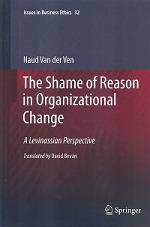But there is more to say about Wittgenstein. His initial striving for pure, linear logic and unequivocal truth at some point gave way to the belief that multiple contextual logics could coexist in plurality. ‘The’ truth was no longer his goal, rather clarity in the practical use of words and language. This change in Wittgenstein’s thinking is the cause of a fairly common distinction made between an early and a later Wittgenstein.
The said change of direction in his philosophy does not please everyone and some are even inclined to describe Wittgenstein’s late philosophy as obscure and incomprehensible. For example, Bertrand Russell – a big fan of the early Wittgenstein – believed the later Wittgenstein simply gave up the philosophical quest for true knowledge and thus betrayed the duty of a philosopher. According to Ernest Gellner, the late Wittgenstein leads to relativism or conservatism.
Others, such as John Austin and Gilbert Ryle, enthusiastically follow in Wittgenstein’s footsteps. In the Netherlands, Bert Keizer praises him for the revolutionary break with Plato that Wittgenstein performs.
I belong to the second group. Although I have some reservations when it comes to a possible conservative effect of Wittgenstein’s work, on the whole I find it refreshing and relaxing. The remarkable thing is that my appreciation relates to a number of elements which I also find and appreciate in the style of the Talmud. Therefore for me Wittgenstein’s thinking is closer to Talmudic thought than is recognized in general, and than he himself would have liked.
What do I have in mind when I say that? What are those possibly parallel elements? I think of two things: a pragmatic interest in finding passable paths and his abandon of the notion of ‘the’ truth.
For the later Wittgenstein the criterion for determining the ‘correct view’ is whether we have something to go on with again. He wonders what it takes to achieve that, and how to act according to what the situation asks from us. So, Wittgenstein quite deliberately does not invoke universal truth as a criterion for action, his criterion is pragmatic in nature.
Do not ask what a thing is, so is his motto, but look how we speak about them and act with them. In doing so he arrives at contextual meanings of language, the meaning of a word is its use. “To know how to go on” is what it’s all about. What is right depends on the game you are playing.
Take for example the public debate about smoking. Thinkers in the line of the later Wittgenstein don’t care much about the scientific truth in this area, ie about the question whether there is conclusive evidence that smoking produces health damage, and if so how exactly.
What these thinkers dó wonder about is what is socially accepted as a fact, on the basis of which we actually (can) act. Such as: that we have seen enough to assume a link between smoking and lung cancer, and are inclined to put some responsibility on tobacco manufacturers. And that in the course of time other accents can be laid. Thus the conversation about smoking becomes more of a practical-normative question than a truth issue.
In the Talmud discussions can proceed in the same way. Also for Talmudic statements a central criterion is the question of whether a passable path emerges. Not for nothing the word ‘halacha’ (the whole of rabbinic regulations) is derived from the verb ‘to go’. And if a collectively passable path is at stake, then a set of guiding rules and etiquette may be more convenient than the availability of a solid truth.
An example of Talmudic reasoning is the treatment of the question whether a given furnace is kosher or not. Rabbi Eliezer, for his answer to that question, relies on divine truth, and emphasizing that, he manages to move God to all kinds of supernatural signs: “If I’m right”, Rabbi Eliezer says, “this tree will now be uprooted and that river will flow in the opposite direction”, and indeed they do. But the other rabbis in the meeting appear not to be impressed by that truth. “We pay no attention to a heavenly voice, for long ago You, Eternal One, at Mount Sinai have written in the Torah: Follow the majority”. So, just decide democratically, without divine intervention.
It is remarkable that such a way of reasoning, both in the case of the Talmud and in the case of the Philosophical Investigations (from the later Wittgenstein) has an effect on the style in which the books have been written. Both have a capricious character in which reasonings take place through associations rather than through a strictly logical, linear structure. Furthermore, both works pay a lot of attention to individual, specific situations and cases. In Wittgenstein this is a deliberately chosen style: he speaks judgmental about the ‘contempt for the individual case’ and he fights the human tendency to generalize. “I'll teach you differences”, Wittgenstein says, an endeavor that can be also attributed to the Talmud.
An indelible difference is that in the Talmud the possibility of reduction of sentences to a Biblical verse is required. It presses the associative way of thinking of the rabbis to great heights, but the extent of associated squirming and wriggling would undoubtedly greatly go against the grain with Wittgenstein.
Remains that both Wittgenstein and the Talmud with their organizing work aim at clarifying lived human practices. Who knows, if Wittgenstein had not been bothered by time-bound prejudices against the Talmud, he would perhaps have recognized the parallels.
Also see The portable homeland and I-lit

